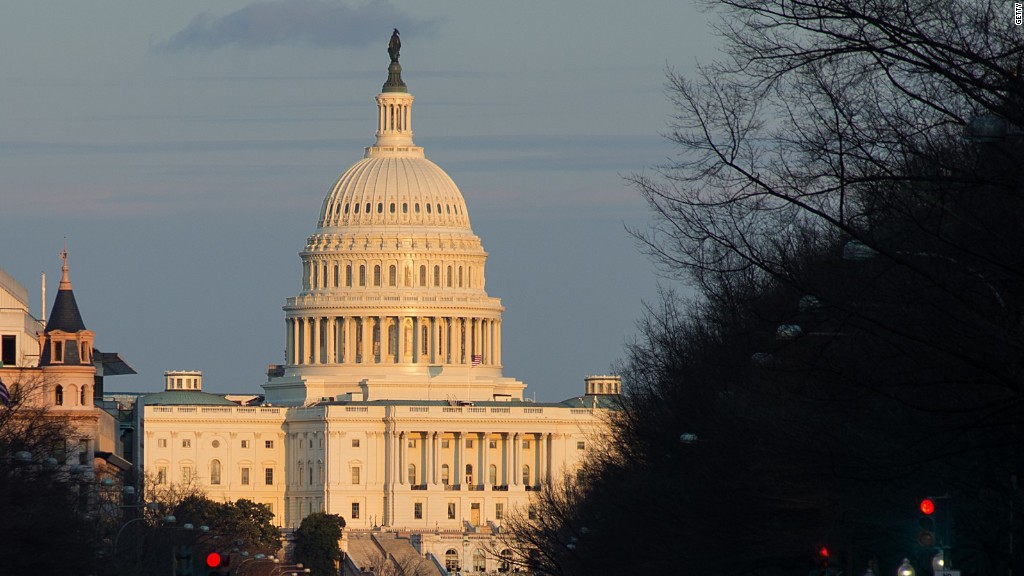
About 850,000 federal employees were sent home, with a total of 6.6 million work days lost.
Hundreds of thousands of federal contractors, from janitorial and landscaping workers to engineers and scientists, were laid off temporarily.
National parks and museums shut down for more than two weeks, hurting tourism and nearby economies.
Some 700 small business owners seeking about $140 million worth of SBA loan guarantees were in limbo, leaving those businesses without financing.
And daycare centers, grocery stores and youth sports programs at military bases were all closed due to lack of civilian employees.
The 16-day long federal government shutdown in October 2013 was the most costly on record. With the U.S. government on the verge of yet another shutdown, it's worth noting just how much the episode five years ago disrupted the economy and the lives of millions of Americans.
"Shutdowns waste money, interrupt services that taxpayers deserve and chip away the public's faith that Congress and the administration know what they're doing," said Tony Reardon, president of the National Treasury Employees Union, the union that represents 150,000 workers at 32 federal agencies and departments.
Related: Government shuts down
The 2013 shutdown cost the economy an estimated $20 billion, according to an estimate from Moody's Analytics. An official government estimate said it shaved 0.3% percentage points off of the nation's gross domestic product that quarter, the broad measure of overall economic activity.
Federal government spending is a significant portion of the nation's economic activity, adding more than $1.1 trillion a year to the economy, according to the GDP report.
It's true that the government will eventually spend most of that money after a shutdown. As many as 2 million federal workers could miss a paycheck, depending on the timing of a shutdown -- even those who are deemed essential and remain on the job, such as air traffic controllers, prison guards and FBI agents. That's what happened in 2013.
Whether or not they stay on the job, most government employees will all probably get back pay eventually.
But those delayed payments create a lot of uncertainty that hurts consumer spending. Many government workers will probably cut back their own spending during the shutdown. A survey of National Treasury Employees Union members in 2013 found that 84% of workers had cut back on necessities and 72% went further into debt because of that shutdown.
And the businesses that miss out on that spending, like restaurants and movie theaters, aren't likely to recoup those sales.
Related: Government shutdown would hurt the economy
"The dollars and cents of federal spending matter, but [the problem] was really the impact on confidence due to the uncertainty," said Mark Zandi, chief economist for Moody's Analytics.
The good news for anyone worried about the impact of another shutdown is that consumer confidence and business confidence is much stronger today than it was in 2013.
"Back in 2013, the economy was much more fragile," said Zandi. "Sentiment now is as strong as it gets."
But today's confidence could be damaged if there is a shutdown, especially if it appears to be a sign of more problems between Congress and the Trump administration, said Zandi.
"If it's part of a broader problem, if they start to play brinkmanship with the debt ceiling next month, then we have a problem," he said.
Correction: An earlier version of this story incorrectly stated that the 2013 shutdown was the longest on record.


